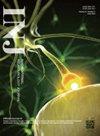Efficacy and Safety of Low-Dose Intravesical OnabotulinumtoxinA Injections in Female Patients With Detrusor Overactivity With Detrusor Underactivity
IF 1.8
3区 医学
Q3 UROLOGY & NEPHROLOGY
引用次数: 0
Abstract
Purpose We assessed the effectiveness and safety of using intravesical onabotulinumtoxinA (onabotA; BOTOX) injection with a low dose (75 units) for treating urinary storage symptoms in patients with detrusor overactivity with detrusor underactivity (DODU) compared to using the standard 100 units of onabotA in patients with overactive bladder (OAB). Methods This ambidirectional study included 121 female patients who received intravesical onabotA injections at our hospitals. A total of 87 patients with OAB and 34 patients with DODU were reviewed using a 3-day voiding diary, uroflowmetry, and questionnaires including the International Prostate Symptom Score (IPSS), Overactive Bladder Symptom Score, and Patient Perception of Bladder Condition. Patients were evaluated at baseline, within 2 weeks of treatment, and beyond 3 months after treatment. Results Questionnaire scores of the DODU group demonstrated significant improvement in the short term, with a subsequent decline, but an overall improvement compared to baseline in the long term. Notably, the DODU group exhibited enhanced IPSS voiding scores after the treatment. In the OAB group, most questionnaire scores, excluding the IPSS voiding score, showed significant posttreatment improvement, which was sustained to some extent in the long term. Voiding diary parameters related to storage symptoms were enhanced in both groups. The maximum and mean flow rates decreased in the OAB group but increased in the DODU group, particularly in the short term (P=0.000). The postvoid residual volume increased in both groups after posttreatment, with a mitigated change in the long term. Safety assessments revealed manageable adverse events in both groups with comparable frequencies. Conclusions Low-dose intravesical onabotA for DODU demonstrated a relatively shorter duration of efficacy than OAB. Nonetheless, the treatment improved both storage and voiding symptoms in patients with DODU without significant adverse effects.小剂量膀胱内注射奥那巴妥妥毒素 A 对女性逼尿肌过度活动和逼尿肌活动不足患者的疗效和安全性
目的 我们评估了与膀胱过度活动症(OAB)患者使用 100 单位的标准剂量相比,使用低剂量(75 单位)膀胱内注射奥那博肽(onabotulinumtoxinA,BOTOX)来治疗逼尿肌过度活动症合并逼尿肌活动不足(DODU)患者储尿症状的有效性和安全性。方法 该研究包括 121 名在本医院接受膀胱内注射奥那博特的女性患者。共有 87 名 OAB 患者和 34 名 DODU 患者接受了 3 天排尿日记、尿流率测定和问卷调查,包括国际前列腺症状评分 (IPSS)、膀胱过度活动症症状评分和患者对膀胱状况的感知。对患者进行了基线、治疗 2 周内和治疗 3 个月后的评估。结果 DODU 组的问卷得分在短期内有了显著改善,随后有所下降,但与基线相比,长期总体有所改善。值得注意的是,DODU 组在治疗后的 IPSS 排尿评分有所提高。在 OAB 组中,除 IPSS 排尿评分外,大多数问卷评分在治疗后都有明显改善,并在一定程度上保持了长期改善。两组患者与储尿症状相关的排尿日记参数均有所改善。OAB组的最大流速和平均流速有所下降,而DODU组则有所上升,尤其是在短期内(P=0.000)。治疗后,两组患者的排尿后残余尿量均有所增加,但长期变化较小。安全性评估显示,两组的不良反应均在可控范围内,发生频率相当。结论 低剂量膀胱内注射奥那博特治疗 DODU 的疗效持续时间比 OAB 短。尽管如此,该疗法仍能改善 DODU 患者的储尿和排尿症状,且无明显不良反应。
本文章由计算机程序翻译,如有差异,请以英文原文为准。
求助全文
约1分钟内获得全文
求助全文
来源期刊

International Neurourology Journal
UROLOGY & NEPHROLOGY-
CiteScore
4.40
自引率
21.70%
发文量
41
审稿时长
4 weeks
期刊介绍:
The International Neurourology Journal (Int Neurourol J, INJ) is a quarterly international journal that publishes high-quality research papers that provide the most significant and promising achievements in the fields of clinical neurourology and fundamental science. Specifically, fundamental science includes the most influential research papers from all fields of science and technology, revolutionizing what physicians and researchers practicing the art of neurourology worldwide know. Thus, we welcome valuable basic research articles to introduce cutting-edge translational research of fundamental sciences to clinical neurourology. In the editorials, urologists will present their perspectives on these articles. The original mission statement of the INJ was published on October 12, 1997.
INJ provides authors a fast review of their work and makes a decision in an average of three to four weeks of receiving submissions. If accepted, articles are posted online in fully citable form. Supplementary issues will be published interim to quarterlies, as necessary, to fully allow berth to accept and publish relevant articles.
 求助内容:
求助内容: 应助结果提醒方式:
应助结果提醒方式:


